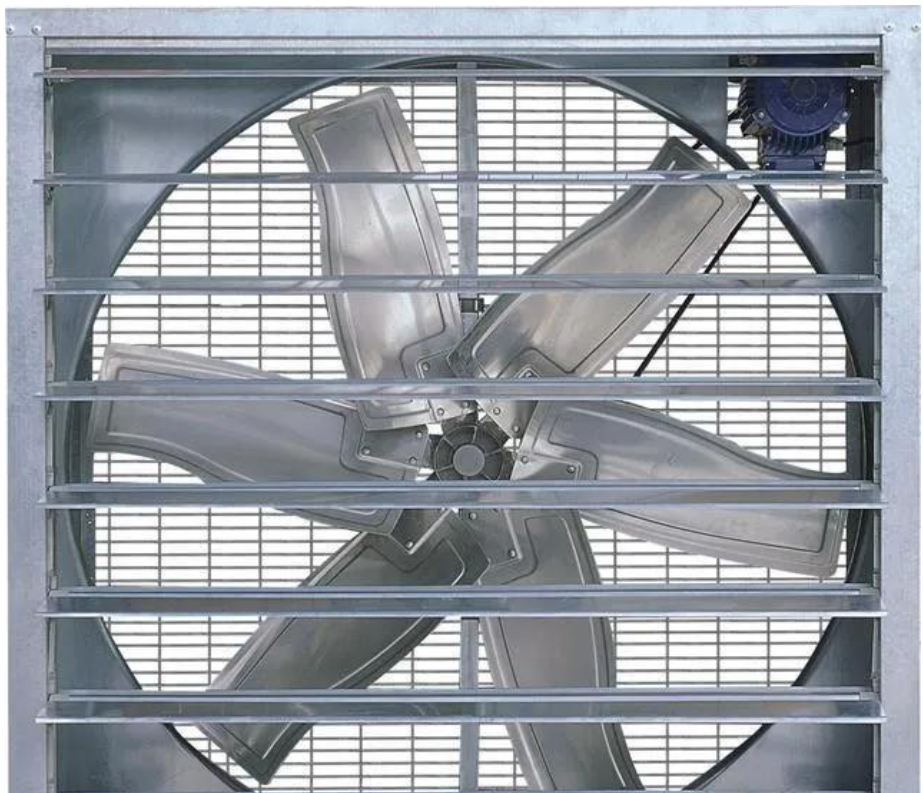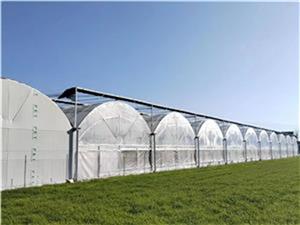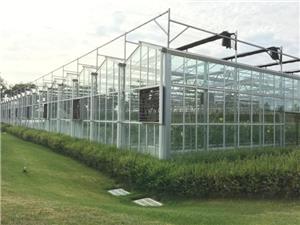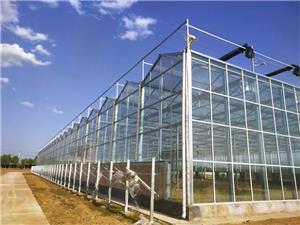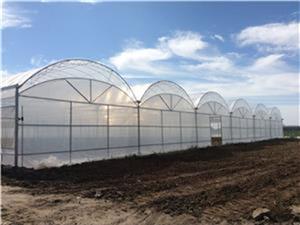In the fields of modern agriculture, industrial production, and livestock breeding, the temperature control of indoor environments is directly related to crop growth, production efficiency, and breeding quality. Among various solutions, the forced cooling system with fans and wet curtains has become a preferred choice for many scenarios due to its significant cooling effect and high cost-effectiveness. This article will comprehensively analyze this efficient cooling system from aspects such as the cooling principle, system composition, characteristics of core components, application scenarios, and key parameters.
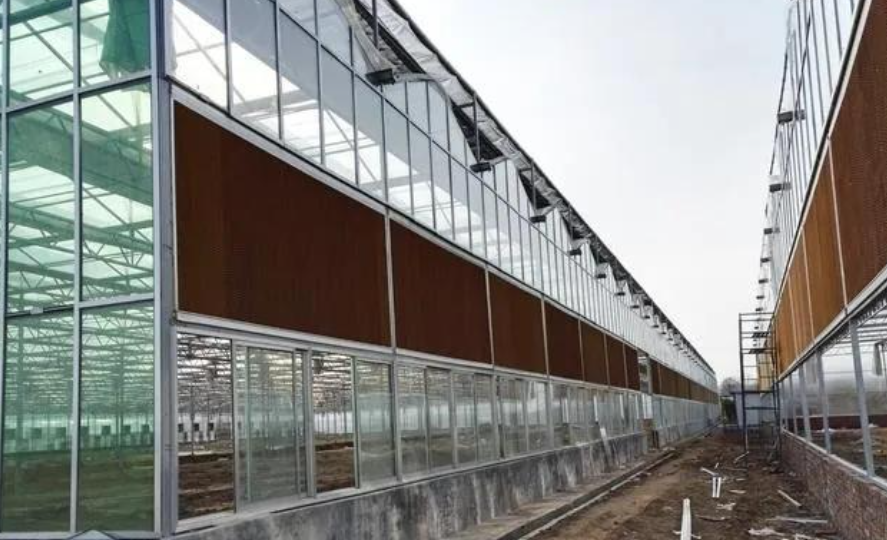
1. Core Cooling Principle of Fans and Wet Curtains: Achieving Heat and Moisture Exchange through Water Evaporation
The core logic of the fan-wet curtain cooling system is to realize the cooling and humidification of indoor air through direct contact between air and water and by virtue of the heat absorption property of water evaporation. Its specific process can be divided into three key steps: First, the water circulation device in the system delivers water to the top of the wet curtain, and the sprayed water flows evenly down the wet curtain paper from top to bottom, forming a thin and uniform water film on the surface of the wet curtain. Second, the exhaust fans installed on the other side start to exhaust air to the outside, creating a stable negative pressure environment inside the greenhouse. This negative pressure forces the outdoor air to pass through the wet curtain and enter the room. Finally, when the outdoor air flows through the water film on the surface of the wet curtain, the water absorbs the sensible heat (i.e., the heat of the air) and evaporates, taking away the heat in the air while increasing the air humidity. Eventually, the temperature of the air entering the room decreases significantly, thus achieving the dual effects of cooling and humidifying the indoor environment.
This cooling method does not rely on mechanical refrigeration but utilizes the natural principle of evaporative heat dissipation. It not only avoids the high energy consumption of traditional air conditioning systems but also improves air humidity while cooling, making it particularly suitable for scenarios that require coordinated control of temperature and humidity.
2. System Composition: Four Core Components Working in Synergy
As a typical application scenario of the fan-wet curtain system, the cooling system of a greenhouse is mainly composed of four core components: high-flow energy-saving fans, wet curtains, water circulation systems, and control systems. Each component has a clear division of labor and operates in synergy:
High-flow energy-saving fans: As the "power source" of the system, their core function is to create negative pressure through air exhaust and guide air flow. The power of conventional fans dedicated to greenhouses is 1.1kw, which can not only meet the air exhaust needs of large spaces but also control energy consumption. In terms of size, the 1380 type and 1500 type are conventional choices, which can be flexibly matched according to the greenhouse area. The fan blade opening methods are divided into push-pull type and weight type. The former is easy to operate, while the latter has strong stability and can adapt to different usage environments.
Wet curtains: As the "core medium" for contact between air and water, their structural design directly affects the cooling efficiency. The wet curtain paper is made by bonding fiber paper at a special angle, with a corrugated surface. Moreover, the corrugations of adjacent layers of wet curtain paper are inclined in opposite directions. The ingenuity of this design lies in that the corrugated structure can provide a sufficiently large contact area for air and water, and the staggered channels can extend the residence time of air in the wet curtain, enhance the heat and mass transfer efficiency between the water film on the wet curtain surface and the air, and ensure more sufficient evaporative heat absorption.
Water circulation system: It is responsible for delivering water to the top of the wet curtain and recycling the unevaporated water to form a closed-loop circulation. Through components such as pipelines, water pumps, and water storage tanks, the system ensures the uniform spraying and efficient utilization of water, avoids water waste, and can also maintain the cleanliness of water quality through filtration devices to prevent blockage of the wet curtain.
Control system: As the "brain" of the system, it can automatically adjust the fan speed and water circulation flow according to real-time data such as indoor temperature and humidity to achieve precise temperature control. For example, when the indoor temperature exceeds the set threshold, the system automatically starts the fan and water circulation; when the temperature drops to the target range, it automatically reduces the power or shuts down, which not only ensures a stable environment but also further saves energy consumption.
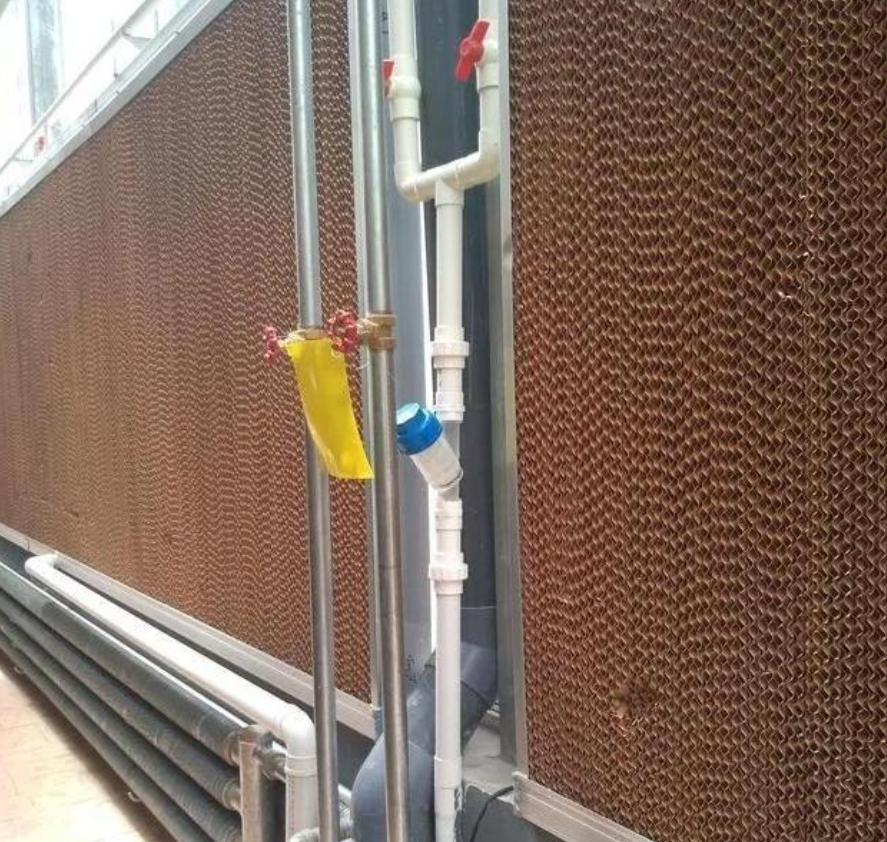
3. Core Characteristics of Wet Curtains: Balancing Durability and Efficiency
As a key component of the system, the performance of wet curtains directly determines the cooling effect and service life. To adapt to complex environments such as greenhouses (e.g., high humidity, fertilizer residues, ammonia gas in livestock breeding), the wet curtains dedicated to greenhouses are all treated with polymer materials and have three core characteristics:
Corrosion resistance and long service life: Polymer materials can resist the erosion of humidity and chemical substances (such as salts in fertilizers and harmful gases in breeding environments), prevent the wet curtain paper from mildewing and rotting, and have a service life of 5-8 years under conventional use.
4. Scientific Installation: Position Selection and Space Adaptation Affect Cooling Effect
To maximize the cooling efficiency of the fan-wet curtain system, the adaptation of installation position and greenhouse size is crucial. In greenhouse installation, the industry generally follows the principle of "installing wet curtains on the north wall and fans on the south wall": The north side is usually the windward side, where the outdoor air temperature is relatively low. Installing wet curtains on the north wall will not block sunlight (avoiding affecting crop photosynthesis) and can introduce more low-temperature air. The south side is the leeward side, where the temperature is relatively high. Installing fans here to exhaust air to the outside can quickly discharge the hot air inside the greenhouse and form more efficient air convection.
In addition, the width of the greenhouse is a key parameter affecting the cooling effect. Since the cooling effect of air will gradually weaken with the increase of propagation distance after passing through the wet curtain, the width of a single greenhouse should not exceed 48 meters. If the width exceeds this threshold, the air temperature on the side far from the wet curtain may not drop to the target range, resulting in uneven indoor temperature and affecting crop growth or breeding effects.
5. Application Scenarios and Cooling Effect: Covering Multiple Fields with Significant Temperature Reduction
The advantages of the forced cooling system with fans and wet curtains lie not only in its scientific principle and simple structure but also in its wide applicability and significant cooling effect. In addition to the core application scenario of greenhouses (including intelligent greenhouses, film greenhouses, etc.), this system is also widely used in modern agricultural planting bases, livestock breeding houses, industrial production workshops and other scenarios that require cooling and humidification. For example, in vegetable greenhouses with high temperatures in summer, it can create a suitable environment for crops such as tomatoes and cucumbers that prefer warm temperatures but are not tolerant to high temperatures. In livestock breeding houses, it can not only reduce the temperature but also increase the humidity, reducing the mortality rate of livestock and poultry caused by heat stress. In industrial workshops (such as textile and electronic workshops), it can improve the working environment of workers and enhance production efficiency.
In terms of cooling effect, through efficient heat and moisture exchange between water and air, the dedicated fan-wet curtain cooling system for standard greenhouses can reduce the indoor temperature by 7-15℃. This temperature reduction range can effectively cope with high-temperature weather above 35℃ in summer. At the same time, the air flow guided by the system is relatively fast, which can ensure sufficient fresh air volume indoors, avoiding insufficient carbon dioxide (in crop scenarios) or odor accumulation (in breeding scenarios) caused by air stagnation, and providing a dual guarantee of "suitable temperature and humidity and fresh air" for crop growth and livestock breeding.
6. System Advantages: Dual Guarantee of High Cost-Effectiveness and Low Energy Consumption
Compared with traditional air conditioning cooling systems, the fan-wet curtain system also has advantages in three aspects: easy installation, low cost, and low energy consumption: The installation process does not require complex pipeline laying or wall renovation. Both the wet curtains and fans can be fixed through the main frame structure of the greenhouse, with a short construction period. The cost is only 1/3 to 1/2 of that of air conditioning systems with the same area, greatly reducing the initial investment. In terms of energy consumption, the 1.1kw fan power combined with the low-power water circulation system results in an operating cost much lower than that of air conditioners, which can help users save a lot of electricity costs in long-term use.
In conclusion, the forced cooling system with fans and wet curtains, with its scientific principle, simple structure, significant effect, and high cost-effectiveness, has become an "efficient cooling tool" in the fields of modern agriculture, breeding, and industry. It not only solves the problem of temperature control in high-temperature environments but also provides an efficient and economical solution for the production and growth needs of various scenarios through the coordinated regulation of temperature and humidity, playing an important role in promoting the modernization of agriculture and green industrial production.
